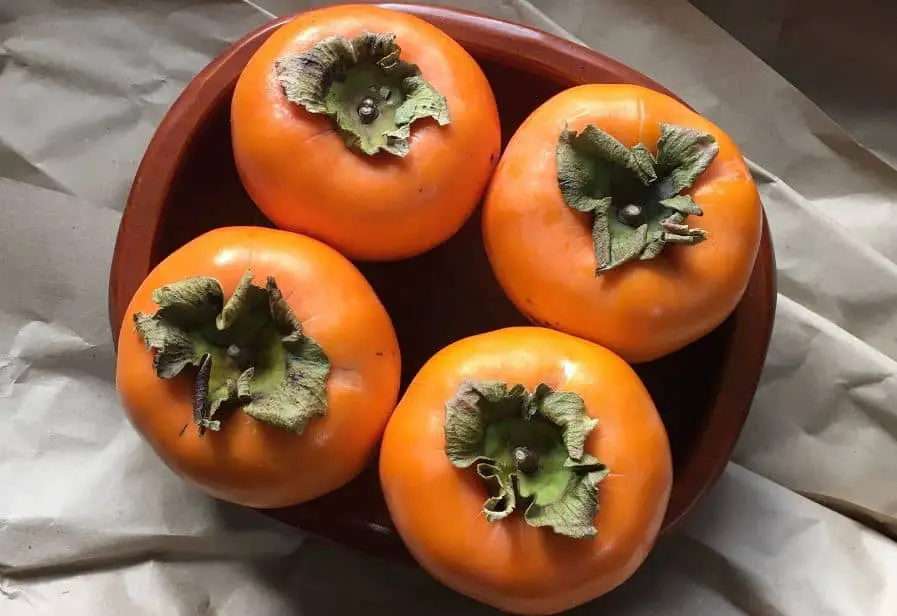In places where the only fruit available is from the store, persimmons have a terrible reputation. Diospyros kaki, a persimmon that is native to Asia and is used in persimmon dessert dishes, lacks the intense sweetness of fruit that is native to North America. Knowing a little bit about persimmon harvest season and how to prepare it is essential for using fruit at its best in various persimmon recipe ideas.

About Persimmon Fruit
East of the Mississippi River, American persimmons (Diospyros virginiana) may be found in rocky or dry, open forests and meadows, grasslands, thickets, abandoned fields, & roadsides from New York to Florida and on into west Texas.
The tree is simple to distinguish in the winter because of its thick, black, checkerboard-patterned bark. The wood, an ebony relative, is very durable and is used to make golf clubs, pool cues, or shoe lasts.
Plants often have distinct male and female flowers and are dioecious. In the late spring, male-scented, white-to-greenish flowers grow singly with female flowers.
Throughout the fall, frequently far into winter, the blooms give way to persimmon fruit. The orange to reddish-purple fruit of the ripe persimmon stands out against the glossy, dark green leaves. Ripe persimmons are too fragile and delicate to be used in trade; green persimmons are hard and quite astringent.
Persimmon Harvest Time
No two persimmon trees mature their fruit at the same time. Fruit may ripen starting in September and frequently continuing into the new year. Contrary to popular belief, persimmon fruit will not begin to mature until the first hard frost. Fruit may mature in late February when it has dropped below freezing or in September when it is still in the 80s.
As the fruit starts to fall off the tree, you can be sure it is fully ripe. Harvesting falling fruit must be done quickly since various kinds of critters like the tasty persimmons. Fruit should still be harvested about every other day.
When persimmon fruit is mature, it is fragrant or almost cloyingly sweet, which makes it the ideal ingredient for persimmon dessert dishes, including ice creams, pies, syrups, and jellies.
How to Cook Persimmon
Pushing the fruit through a potato ricer, scraping the pulp from the ricer, and transferring it to a container is the simplest method to prepare the fruit for persimmon dishes. The seeds and peel are readily removed with this procedure. The pulp may be utilized immediately in various persimmon dishes, frozen, or dried into fruit leather. The fruit leather may be consumed independently or used to produce Native American cakes, biscuits, and pudding by combining it with cornmeal or other cereal grains.
Ideas for Persimmon Fruit Recipes
Naturally, persimmon fruit may be peeled, seeded, and utilized in dishes like kale and persimmon salad with pecan vinaigrette, grilled sandwiches with persimmon and fontina muffins, quick bread, and cookies.
Persimmon purees may be added to drinks, used in puddings, or turned into ice cream syrup.
Fresh persimmon may flavor the rice with its fragrant taste and sweetness. Make it apricot marmalade for toast or over crepes, or to sauté and serve over pork. Try persimmons on pizza with béchamel sauce and the peppery flavor of arugula, or serve persimmons with brie on crostini as an appetizer.
The only restriction on persimmon dish ideas is your creativity. Make a batch of persimmon jam and decorate it with adorable labels to give as Christmas presents to loved ones if all else fails.


